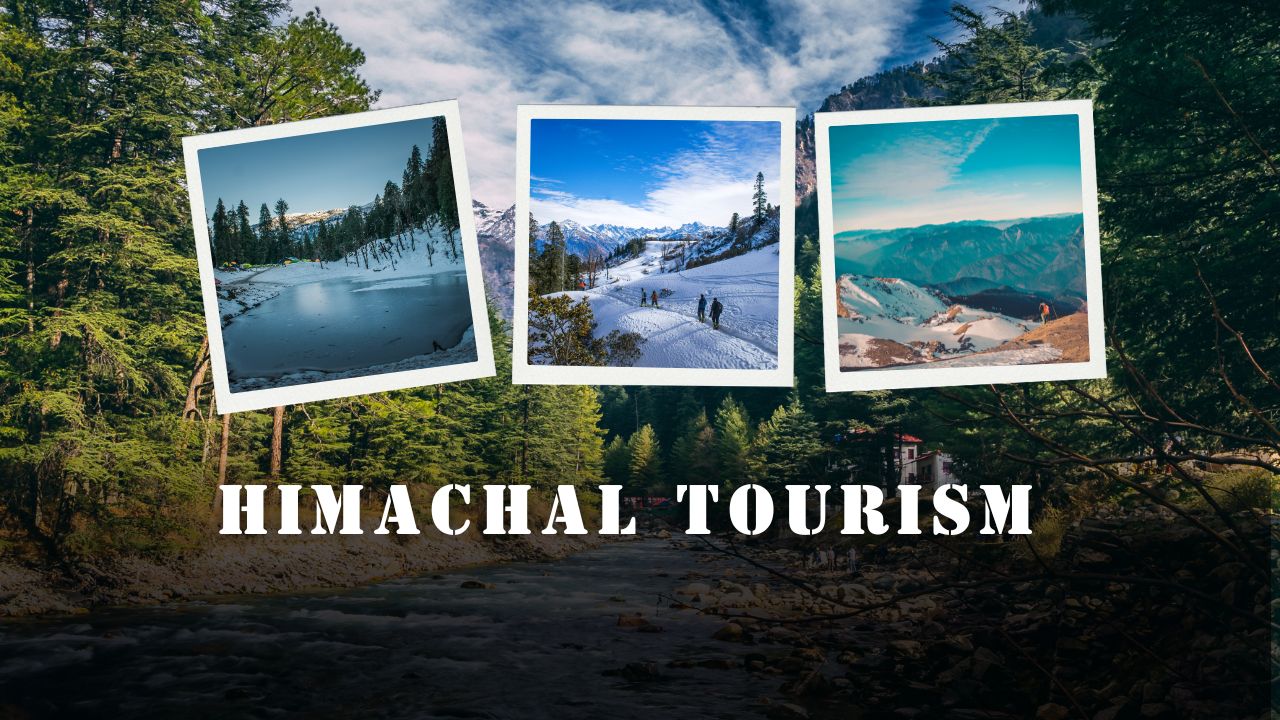Experience the Rich Culture and Beauty of Himachal Tourism
Introduction to Himachal Tourism: Nature, Heritage, and Simplicity
Himachal Tourism reflects the true essence of India’s hill life—simple, rich in tradition, and deeply connected to nature. From ancient temples to apple orchards, and peaceful valleys to bustling local bazaars, this region in North India offers something different from the noise of modern cities. Whether you’re looking to experience rural life, local cuisines, or cool weather, Himachal Pradesh delivers it all without trying to impress—just by being real.
Why Himachal Tourism Attracts All Kinds of Travellers
Himachal Tourism attracts trekkers, writers, families, bikers, and anyone who wants to take a break from routines. Unlike destinations made for tourists, Himachal welcomes you into its normal daily life. You’ll see kids walking to school through hills, farmers in fields, old wooden homes, and prayer flags fluttering in the wind. People often return here not for luxury, but for calm, honesty, and time that runs slower.
Best Towns and Villages Under Himachal Tourism
Shimla – Colonial Touch with Local Flavor
Once the summer capital of British India, Shimla still carries an old-world charm. The Mall Road, Ridge, Jakhu Temple, and Christ Church are popular, but Shimla also offers quiet corners, walking trails, and small cafés that still feel untouched.
Manali – Heartbeat of Young Himachal
Manali is often seen as the face of Himachal Tourism for its snow-capped peaks and lively vibes. Beyond Solang Valley and Rohtang Pass, there are tiny villages like Vashisht and Old Manali that give you the real sense of hill life, music, and handmade crafts.
Dharamshala and McLeodganj – Spiritual Calm
The seat of the Tibetan government-in-exile, this area brings together two cultures. Himachal Tourism here shows a perfect blend of Tibetan monasteries, local Himachali homes, cafes with books, and views that open your mind.
Spiti Valley – Raw, Remote, and Honest
For those looking to see untouched beauty, Spiti is where Himachal Tourism becomes rugged. The high-altitude desert, whitewashed monasteries like Key and Tabo, and clear skies make it feel like another world. No show-off, no rush—just life at its own pace.
Chamba and Dalhousie – Time-Stopped Regions
These areas feel like they’ve remained unchanged for decades. Walks through pine forests, colonial churches, and handwoven shawls remind you that Himachal Tourism is not about ticking off places—it’s about feeling time slow down.
Local Life and Culture: True Backbone of Himachal Tourism
The heart of Himachal Tourism lies in its people. You’ll see families farming on steep slopes, shepherds leading flocks, and women spinning wool on verandas. Festivals like Dussehra in Kullu, Minjar in Chamba, and the Winter Carnival in Manali reflect how deeply culture is woven into life here.
Homes are built of wood and stone, designed for heavy snow. Meals are simple—madra, siddu, and rajma-rice—but made with care. There is no rush, no excess, and that’s exactly what makes it special.
Food That Reflects the Simplicity of Himachal
Himachal Tourism introduces you to food that’s less about spice and more about comfort. A typical thali may include madra (chickpea curry), chha meat (curried mutton), and babru (stuffed puri). The ingredients are often grown right in the backyard—apples, cauliflower, local herbs—and the recipes are passed down without change.
In villages, food is cooked on wood-fired stoves. Tea is served with butter or salt in some parts, like Spiti and Lahaul. If you’re lucky to be invited into a local home, you’ll realize food here isn’t cooked for show—it’s cooked to feed, comfort, and connect.
Handicrafts and Himachali Products Worth Bringing Home
Himachal Tourism supports many small artisan families. Handwoven wool shawls from Kullu, Chamba rumals (embroidered scarves), Kangra paintings, and wooden items from Chamba are more than souvenirs—they’re local history in physical form.
These are not mass-produced items. Each piece takes time. Buying them supports not just an industry, but generations who’ve kept traditions alive through skills taught at home, not school.
Travel Seasons and Weather in Himachal
Himachal Tourism runs year-round, but different regions shine at different times.
- March to June is best for towns like Shimla, Kullu, and Dalhousie—cool, green, and full of life.
- July to September brings rain, making hills fresh but sometimes risky due to landslides.
- October to February is snow season in areas like Manali and Spiti, where life slows down, and hot food by the fire becomes central.
In places like Spiti and Lahaul, heavy snowfall cuts off roads during winter, which means travel must be planned with care. Always check local advisories, and avoid overloading your itinerary.
How Himachal Tourism Is Changing with Time
While still grounded in tradition, Himachal Tourism is slowly shifting. More homestays are opening, run by families, not companies. Young locals are learning digital tools to promote their areas, while still respecting old ways.
Wi-Fi is slowly reaching villages, but people still sit by wood-fired stoves in the evenings. You’ll find trekking groups and yoga retreats, but also old men reading newspapers on sunlit porches. It’s this balance that keeps Himachal real, even in a changing world.
Responsible Travel Is Key to Respecting Himachal Tourism
One major part of Himachal Tourism is learning to be a guest, not a consumer. Don’t litter, avoid plastic, and carry your waste back. Support homestays and local guides. Don’t chase selfies—have conversations.
Resist comparing these places to cities. Don’t expect everything to run on schedule. Learn the local words, respect customs, and adapt your habits. That’s when you’ll get the real taste of Himachal—not in photos, but in your memories.
Road Travel: How to Move Through Himachal Safely
Most of Himachal is connected by narrow roads through mountains. Buses run regularly, though slowly. Taxis are common, but check for registered operators. Self-drive is possible, but only for confident drivers used to mountain roads.
Plan fewer stops. Roads take longer than GPS suggests. Avoid night travel, and always carry essentials—water, food, and a warm jacket. Himachal Tourism is about the journey as much as the stop.
Treks and Walks: Quiet Ways to See Himachal
Himachal is best seen on foot. From small village walks in Jibhi or Shoja to multi-day treks like Hampta Pass, Bhrigu Lake, or Triund, every path offers its own reward. No music, no crowds—just trees, wind, and your steps.
Always trek with a guide if you’re new. Respect forests, do not pluck plants, and keep your sound low. Remember, you are passing through someone else’s land—human and animal.
Photography and Writing: Capturing Himachal Without Taking from It
Photographers and writers are drawn to Himachal Tourism not for staged beauty, but for honest moments—a shepherd and his dog, a woman spinning wool, clouds stuck between trees. These stories don’t need filters.
Ask before you click. Thank people for their time. If you write or share, give credit to the place. Real Himachal isn’t in grand views—it’s in the quiet details.
Final Thoughts on Himachal Tourism: Just Be Present
Himachal Tourism isn’t built to entertain—it’s there to remind you of life outside deadlines, apps, and busy cities. It asks for your attention, not your approval. It’s not perfect, but it’s true.
Walk slow. Sit by a stream. Say namaste. Eat what’s cooked. Listen more than you speak. That’s all you need to carry back something meaningful from the hills.
This is Himachal Tourism—real, raw, and rooted. You don’t need to rush it. Just let it show you life from a simpler angle.













